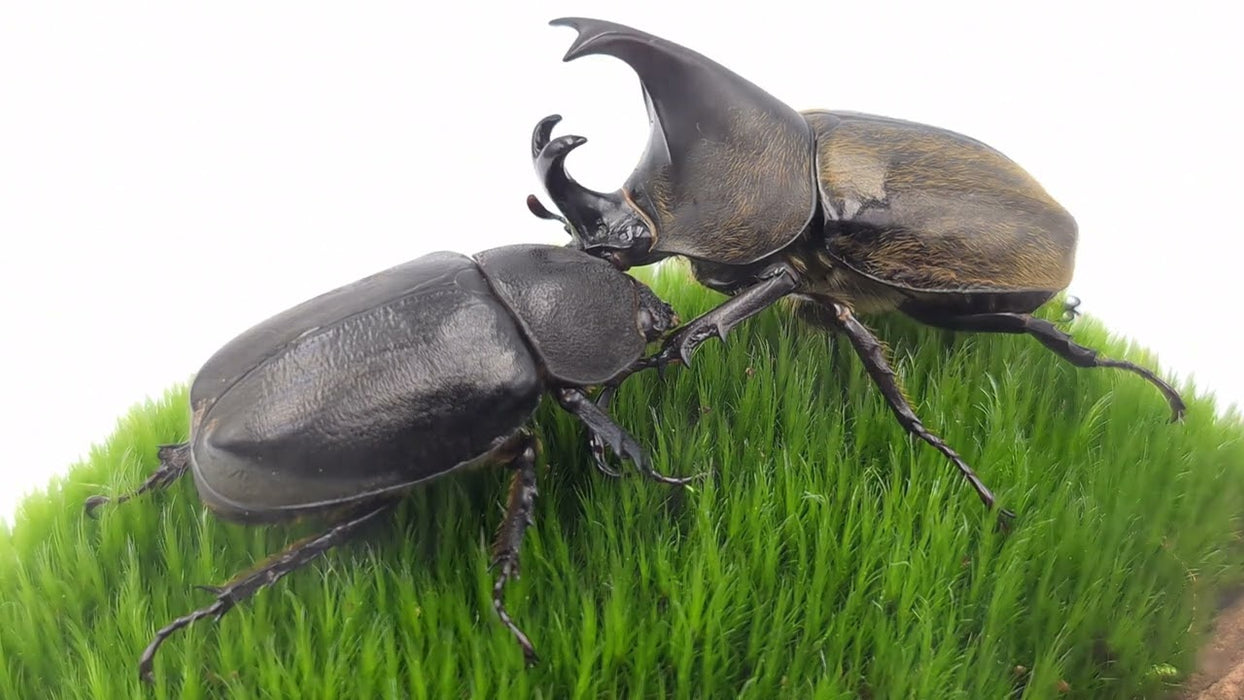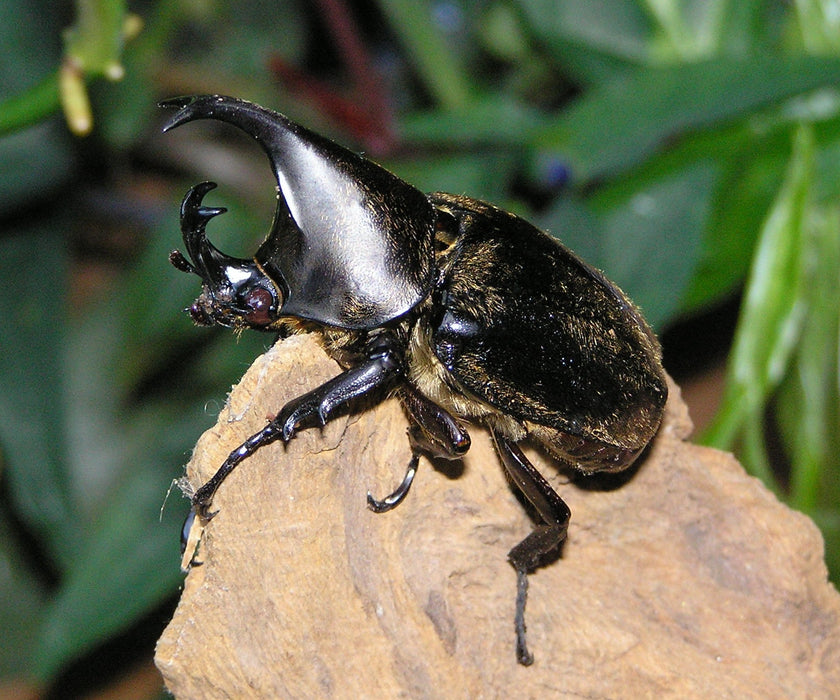
Rhinoceros Beetle | Xylotrupes pubescens
Live Animals Are Click and Collect Only
Please note that we do not ship live animals. You can order online and collect in store.
The Rhinoceros Beetle, scientifically known as Xylotrupes pubescens, is a fascinating insect characterized by its imposing size and unique appearance. These beetles are part of the scarab beetle family and are primarily found in Southeast Asia, particularly in countries like Thailand, Malaysia, and Indonesia. Their most distinguishing feature is the horn-like protrusions on their heads, resembling the horns of a rhinoceros, hence their name.
Origin: The Rhinoceros Beetle, Xylotrupes pubescens, is native to Southeast Asia, where it inhabits tropical and subtropical regions.
Temperature: These beetles thrive in warm and humid conditions. The ideal temperature for keeping Rhinoceros Beetles is around 75-85°F (24-29°C).
Housing: Providing a suitable habitat for Rhinoceros Beetles is essential for their well-being. A spacious enclosure with a substrate of rotting wood and leaves mimicking their natural habitat is crucial. Additionally, a source of moisture, such as a water dish or misting, should be provided to maintain humidity levels. Proper ventilation is also necessary to prevent mold growth and ensure the beetles' comfort.
Feeding: Rhinoceros Beetles are primarily herbivorous and feed on decaying wood and plant matter. In captivity, they can be offered a diet of fruit slices, such as bananas and papayas, as well as rotting wood and leaves. It's essential to provide a variety of food sources to meet their nutritional needs adequately.
Lifespan: The lifespan of Rhinoceros Beetles can vary, with males typically living for several months, while females can live up to a year or more. Their lifespan depends on factors such as environmental conditions, diet, and care.
Behavior and Personality: Rhinoceros Beetles are known for their gentle disposition and are often kept as pets by insect enthusiasts. They are nocturnal creatures and spend their days burrowed in substrate or hidden in crevices. When handled with care, they can be quite docile and fascinating to observe. Males may exhibit territorial behavior and engage in battles using their horns to establish dominance.
Please note: We don't ship live animals. You can order online and choose click and collect, and we will hold it for you.

















